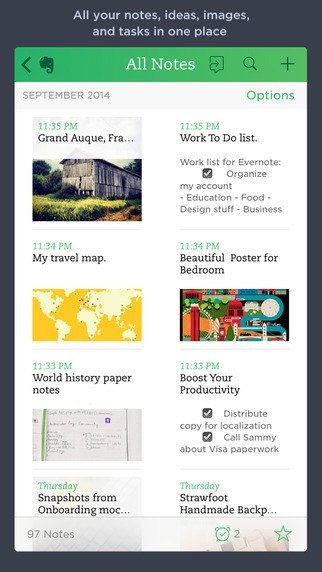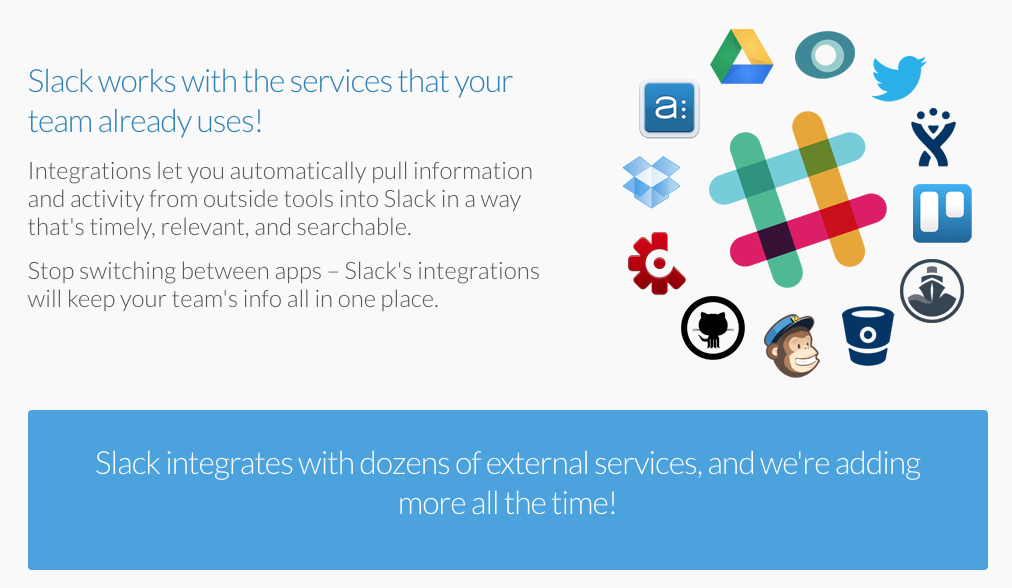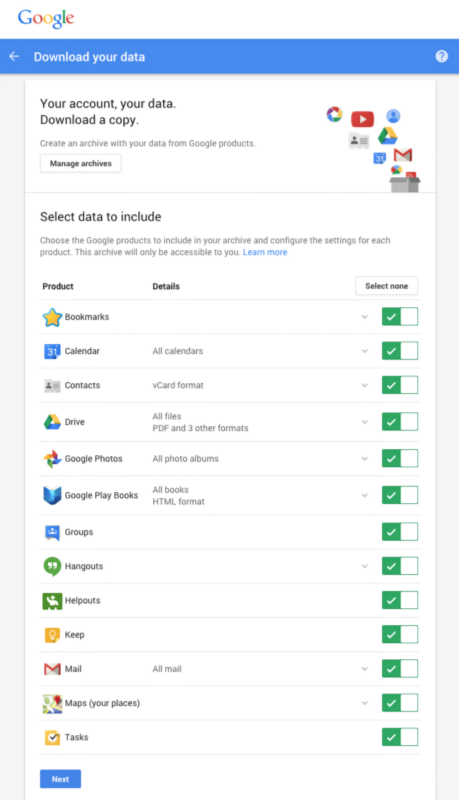Always Choose the Right Business Software Using These Five Criteria

Take a look in your toolbox. I don’t mean hammers and screwdrivers. I mean your digital tools — those apps and programs that help your day-to-day business process. Do they work really well or are they a bit rusty? Even the most beloved tools (email) get worn out or become overburdened.
Every once in a while, it’s necessary to inventory and upgrade your tools. Sometimes you’re driven by a need to replace some awful legacy tool that seems inescapable. Or you look around and see that everyone else is using something better. Maybe you suspect that the grass is greener on the other side and you’re ready to look over the fence for better options.
With the explosion in low-cost, web-based software tools, there are seemingly endless options to research and consider. Our team at Sparktivity has identified five questions to ask when choosing your next business app, or when determining if your current ones measure up.
1. Is it purpose-built?
The best applications are built to do one thing, and to do it well.
Examine the website, marketing materials, feature list, and reviews of the product you’re considering. Can you clearly discern a primary function of the software? Or is positioned as a general-purpose, do-everything-for-everyone platform?
Software applications sit on a design continuum. On one end of the spectrum are the applications intended to consolidate many discrete functions and features. On the other end are the apps that carve out one thing to do and focus on continuous improvement of a limited grouping of features.
Historically, corporate technology departments made the purchasing decisions for companies. They consistently prioritized consolidation of vendors, (a.k.a. their own convenience!) over user experience. The monolithic, enterprise software model was standard in business practice.
Contemporary businesspeople are more tech savvy — technology is more prevalent in their lives than ever before — and the traditional IT department has become less relevant.
The consumerization of software is a shift towards end users choosing the systems they use in the workplace. People want tools that are easy to use and that work well. Enterprise software doesn’t cut it anymore. Tikue Anazodo wrote a great piece about this trend — check it out.
Companies are moving away from monolithic, do-it-all software to purpose-built, modular software.

Think about the difference between a Lego set versus a traditional model kit. A model kit comes with instructions that tell you exactly how to glue the pieces together. There is only one right way to build that kit — that’s monolithic. When you’re done, you’ve got your Bell X-1, the same one as every other kid who bought that set. Later on, if you decide you’d rather have a different plane or maybe even a battleship, you’re just going to have to scrap your first model and buy a whole new package.
A Lego set may come with a picture on the box, and the instructions may tell you how to assemble the thing, but the process and the end result are very different. Nothing is permanent, you can make changes on the fly to improve things as you see fit, and if you get to the end and want to fundamentally change what you’re making, you can. The model kit of the airplane will always be an airplane. The Lego version will be an airplane today, and with some modification and spare parts from something else, may be a race car or a boat tomorrow.
Modular, purpose-built software lets you construct complexity in a granular way, and gives you flexibility to change your mind, learn as you go, add new components, to arrive at new and better outcomes.
Think of each software tool as a unique, purpose-built Lego piece — bricks are structural, hinges make things move, plates create stable foundations. There are endless types of Lego pieces that each do one specific thing. You choose the ones you need to build your ideal final product, and when the time comes to upgrade or change direction, you can swap out the propeller for jet engines, upgrade the wings, add a tail fin, and you’re ready to go.
2. Is it Mobile-first?
The best applications enable you to access and create rich content while away from a hard-wired desktop computer.
To determine if an app is mobile-first, start with these questions:
- What is the experience like when you work with the app while away from the corporate network, from a web browser not made by the app developer, or from out in the world via a phone, tablet, or similar mobile device?
- Does the product have phone and tablet apps built for your devices on the Apple, Google, or other app stores, or is your only option access via a mobile web browser?
Most software product managers have realized that they need something in the app marketplace to check-off the client’s “yep, it has a mobile app” checkbox. But there’s more to it than just being present.
What should mobile-first mean to you? A listing in the various app stores is a good way to determine if someone is working on the product regularly and making updates, if they’ve realized that access from a mobile device is a major requirement these days, and if they understand that native apps provide, thus far, the smoothest experience. That said, you need to go further.

A first-class experience for a mobile app is one that is as rich as if you were sitting at your traditional desktop computer at work.
It may not be feature-for-feature the same, but that’s okay. Mobile-first isn’t about supporting specific hardware either, it’s about providing the experience of full content access and creation, anytime, anywhere, on any device.
Laura Klein and Paul Adams have both recently written nuanced, persuasive pieces about their perspectives on mobile-first. The benchmark is no longer a long list of specific device hardware or at pixel count of screen dimensions; instead, it’s about how a person can interact with the content of the business app while on the go.
3. Can it Integrate?
The best applications effortlessly exchange information with your other tools — they’re good citizens in the new app ecosystem.
Look at the app you’re considering in context with the ecosystem in which it lives. Is the software creator acknowledging that their product exists in a sea of other apps, that you’re already using other business applications, and that you’ll need to connect data inside their app with the data inside several other apps?

We see many apps listing an Integrations page on their website where they talk about how well they work out-of-the-box with other modern business software. A decade ago, a business software company may have bragged about how well their app worked with Microsoft Outlook or Microsoft Office. Today’s version of effortless integration with the popular business apps of our time would be turnkey integrations with ubiquitous tools like Salesforce, Google Apps, or Dropbox.
Integration means playing well with others. If the software application you’re considering doesn’t highlight their ability to easily connect with other popular apps, be wary.
Another way to integrate is through an Application Programming Interface — an API. The API is a way for one software program to “speak” to another without a person needing to stand in the middle and translate. For example, your invoicing system and your online payment system can talk to one another so that when a customer pays an invoice online, the accounting software is automatically updated. In other words, a robust product API can be used to tie non-integrated apps together.
The presence of an API does not always mean you’re working with a great app. Check developer boards and message groups to see what other people are saying about working with the API. That will be a great indicator of whether the API is any good and if it can handle complex business system integrations.
While you may need to hire software developers to use a product’s API to build custom integrations between apps, most modern apps will embrace the current app ecosystem and offer basic out-of-the-box integrations with other popular business tools.
4. Is it Viable?
The best applications fill a clear need in the marketplace and are built by experienced teams who understand the business models required to build software at scale.
With so many software companies, teams, and applications coming and going these days via booms, busts, and buyouts, you’ll want to do some research on who is making this app, their track record, pricing model, and the overall viability of the market they’re trying to enter.
Start with Google, ProductHunt, and CrunchBase. Look for information on the company founders: where they’ve worked before, who is backing them, how much money they’ve raised, how healthy is their company. This can be counterintuitive. On one hand, you don’t want to bet a critical part of your team’s business systems to a brand new upstart development team who have never built or shipped anything before. On the other, an established player who looks very stable can be hampered from true innovation by tight obligations to existing shareholders or customers. You’re looking for the right mix between both extremes.
Next, look at the business model to see if the people who make this app are participating in contemporary norms for cloud-hosted software. Is the cost of the software clearly visible on their website, or do you have to “call for pricing”? Are they offering access to the app via a subscription model? Are there easy-to-understand walkthroughs or support materials for how to use the product, things that aren’t overly technical or full of jargon? These are all signs that indicate whether the app is being designed for purchase and use by contemporary businesspeople versus something marketed and sold to meet the very different needs or wants of traditional technology professionals.
As a rule of thumb, spend as much time researching the team or company who make the product as you spend demoing and testing the product itself.
If you end up taking a chance on a newer product, the more purpose-built the tool, the safer you’ll be. Remember, with a modular approach, your choice of tool or app is not a forever choice, it’s a right now choice.
5. Is it Portable?
The best applications let you take your toys and go home if need be.
Everyone talks about importing data into a new tool, but the question to ask before you buy is this: How do I easily get my data out of this product? If the app doesn’t make it easy to extract your business data into a format you can easily parse or import into a competing tool, then the company’s business model is likely based on some degree of lock-in.

To be clear, portability is not exporting the app itself, but rather the data you and your team will create inside the app. You’ll want to anticipate your eventual exit from this software platform and ask the pertinent questions up front, both to learn about your options and to test their salespeople to see if they speak to this question frequently.
Sometimes software companies and their salespeople will address (or brush off) questions of data import and export by saying “we have an API for that.” Sometimes this is true, but it’s hard to know if that API can really do what you need without digging deeper.
A good software company will keep you as a customer because their application is useful and compelling, not because your critical business data is trapped inside.
Amazing things are now possible with low-cost, web-based business software tools, and the grass really can be greener on the other side. Still, moving from old apps to new ones can be complicated. Avoid making the wrong choices by considering these five guidelines during your research.
You and your team deserve (and demand!) flexibility. You’ll be in great shape if you choose purpose-built, modular business apps that allow for easy integration with other tools, provide true anytime/anywhere mobility, and which offer full data import and export. Few software applications will meet all these criteria exactly, and that’s okay — evaluate and compare everything against your own requirements. No software company knows your business needs like you do.
I live and preach this approach—it's the best strategy I know for choosing business software in the fast-changing world in which we live.
